Few summer pleasures compare to biting into a cool, sweet slice of watermelon. If you’ve ever dreamed of harvesting your own watermelons but thought they required sprawling fields or acres of space, think again! Watermelons can thrive in raised beds, offering home gardeners a manageable, productive way to grow this beloved summer fruit.
Raised beds offer several advantages for watermelon cultivation, including improved soil control, better drainage, and easier pest management. Whether you’re a seasoned gardener or a first-timer, this guide will walk you through how to grow watermelons in raised beds successfully — from choosing the right varieties to harvest time.
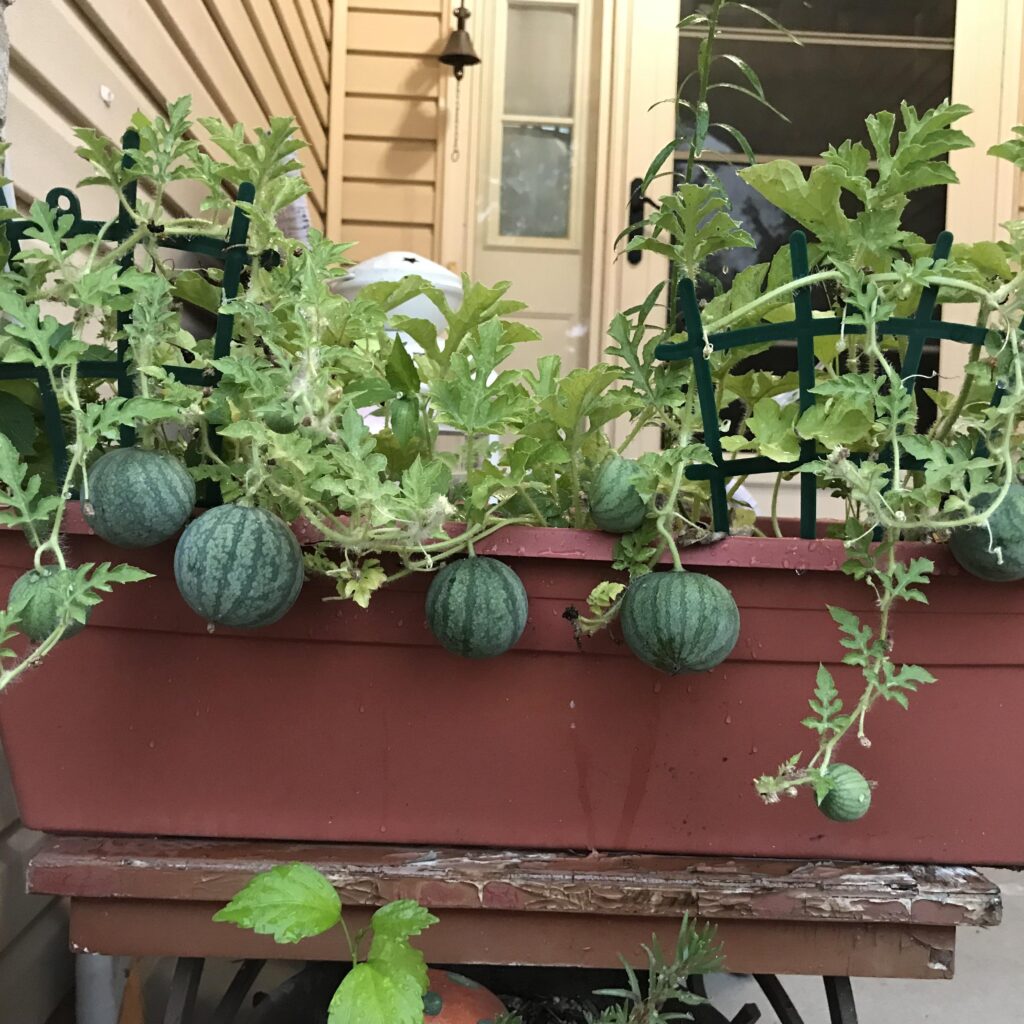
Why Grow Watermelons in Raised Beds?
Watermelons are warm-season plants that love heat and well-drained soil. Raised beds naturally warm up faster in spring, extending your growing season, and offer excellent drainage — something watermelons absolutely need.
Benefits of growing watermelons in raised beds include:
- Better soil control: Amend soil for optimal fertility and texture.
- Improved drainage: Prevent waterlogged roots and diseases.
- Warmer soil: Faster seed germination and stronger early growth.
- Easier weed and pest control: Tidy, contained space makes maintenance simple.
- Efficient space use: Vertical growing options with trellising.
Choosing the Right Watermelon Varieties
Not all watermelons are created equal — especially for raised beds where space is limited. Compact, bush-type, or small-fruit varieties are perfect for raised-bed gardening.
Great Watermelon Varieties for Raised Beds:
- ‘Sugar Baby’: A classic icebox variety, producing 8–12 lb fruits, ripens in about 75 days.
- ‘Bush Sugar Baby’: Compact vines ideal for small gardens and raised beds.
- ‘Golden Midget’: Early maturing, yellow-skinned watermelon perfect for tight spaces.
- ‘Mini Love’: Personal-sized, sweet fruits with compact vines.
- ‘Sweet Beauty’: Crisp, juicy flesh with 6–10 lb fruits and space-saving growth.
Tip: Choose varieties suited to your growing zone and length of growing season.
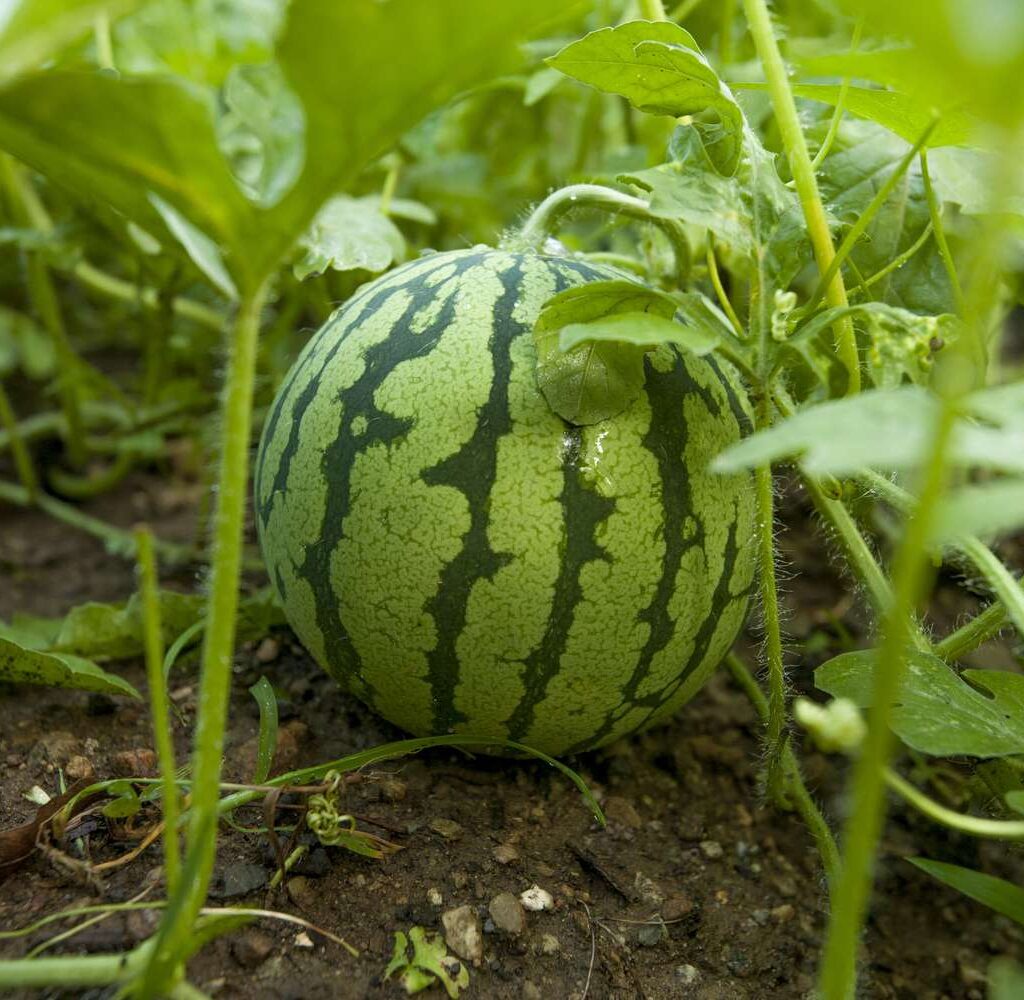
Preparing Your Raised Bed
Size matters when growing watermelons. Opt for a raised bed that’s at least 12–18 inches deep to accommodate their extensive root systems and allow for proper drainage.
Soil Preparation:
- Watermelons thrive in loose, well-draining, fertile soil.
- Aim for a soil pH of 6.0 to 6.8.
- Mix in plenty of organic compost, aged manure, and a balanced slow-release fertilizer (such as 10-10-10) before planting.
Pro Tip: Watermelons love warmth, so position your raised bed in a sunny spot with at least 8 hours of direct sunlight daily.
Planting Watermelons in Raised Beds
Watermelons can be started from seed or transplants. In regions with short growing seasons, starting seeds indoors gives a head start.
When to Plant:
- After all danger of frost has passed and soil temperatures reach at least 70°F (21°C).
Planting Seeds:
- Sow 2–3 seeds per mound or hole, about 1 inch deep.
- Space mounds 2–3 feet apart to give vines room to sprawl.
- Thin to the strongest seedling per spot after germination.
Transplanting Seedlings:
- Harden off indoor-started seedlings by gradually exposing them to outdoor conditions for 7–10 days.
- Transplant on a warm, calm day, spacing them similarly to direct-seeded plants.
Watermelon Care and Maintenance
Watering:
- Watermelons need consistent, deep watering to develop juicy, sweet fruit.
- Provide 1–2 inches of water per week, keeping soil evenly moist but not soggy.
- Reduce watering slightly as fruits begin to mature to intensify sweetness.
Pro Tip: Water at the base of plants early in the day to avoid fungal diseases.
Fertilizing:
- Watermelons are heavy feeders. Apply a balanced fertilizer (10-10-10) at planting.
- Once vines begin running, switch to a low-nitrogen, high-potassium, and phosphorus fertilizer to encourage flowering and fruiting.
Mulching:
- Apply organic mulch like straw or shredded leaves to:
- Retain soil moisture.
- Suppress weeds.
- Keep fruits clean and protect them from soil contact, reducing the risk of rot.
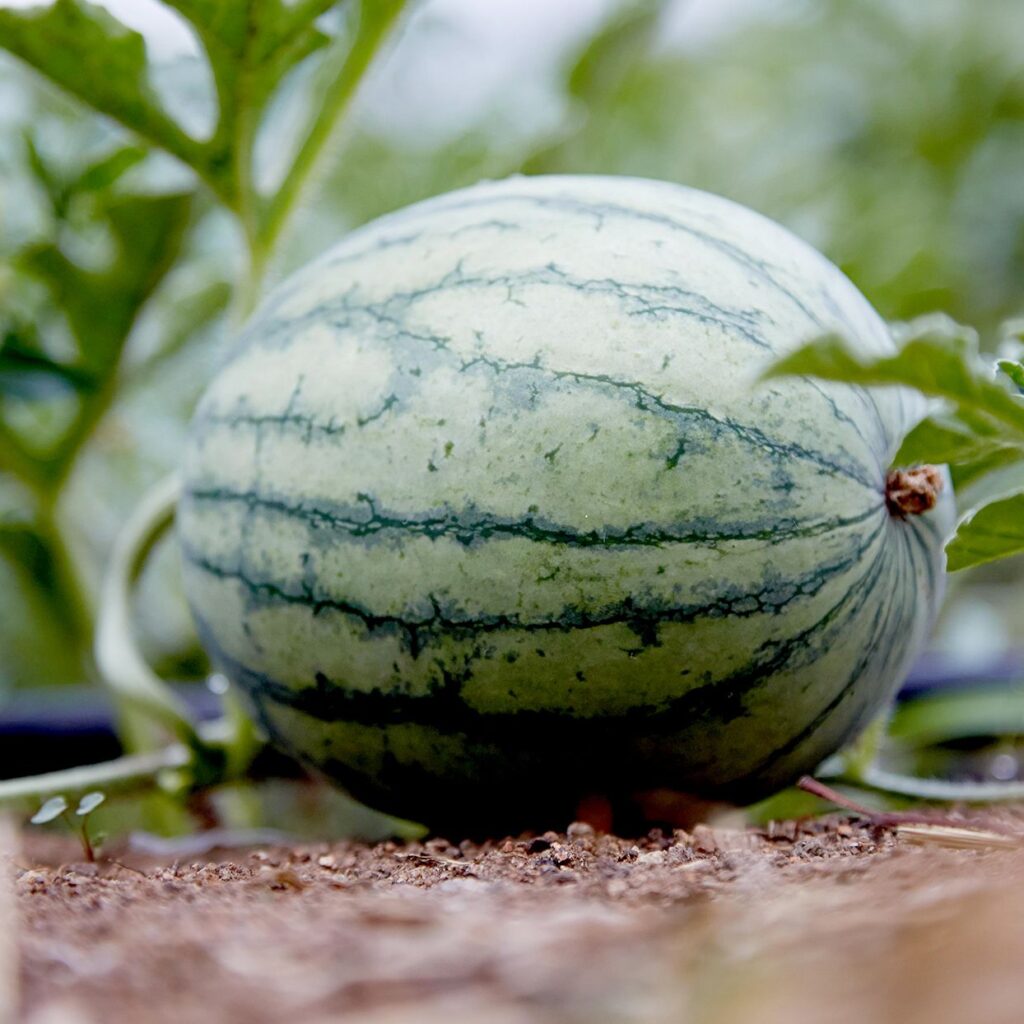
Training Vines in Raised Beds
While watermelons naturally sprawl, you can train them to grow vertically on sturdy trellises or fences to save space in raised beds.
Trellising Tips:
- Use heavy-duty supports — watermelons get heavy!
- As fruits form, support them with slings made of cloth or old pantyhose to prevent breaking off the vine.
If letting vines sprawl:
- Guide them over the sides of the raised bed.
- Protect pathways with mulch or ground covers to avoid muddy fruit.
Pollination and Fruit Set
Watermelons need bees and other pollinators to transfer pollen from male to female flowers.
How to Identify Flowers:
- Male flowers: Appear first; have slender stems.
- Female flowers: Have a tiny immature fruit (ovary) behind the petals.
Pro Tip: If pollination seems poor, hand-pollinate by transferring pollen from male to female flowers using a small brush or cotton swab.
Common Pests and Diseases
Pests:
- Aphids
- Squash bugs
- Cucumber beetles
Control Methods:
- Use floating row covers early in the season.
- Apply organic insecticidal soap or neem oil as needed.
- Encourage beneficial insects like ladybugs.
Diseases:
- Powdery mildew
- Anthracnose
- Fusarium wilt
Prevention Tips:
- Provide good air circulation.
- Avoid overhead watering.
- Remove and discard infected plant material.
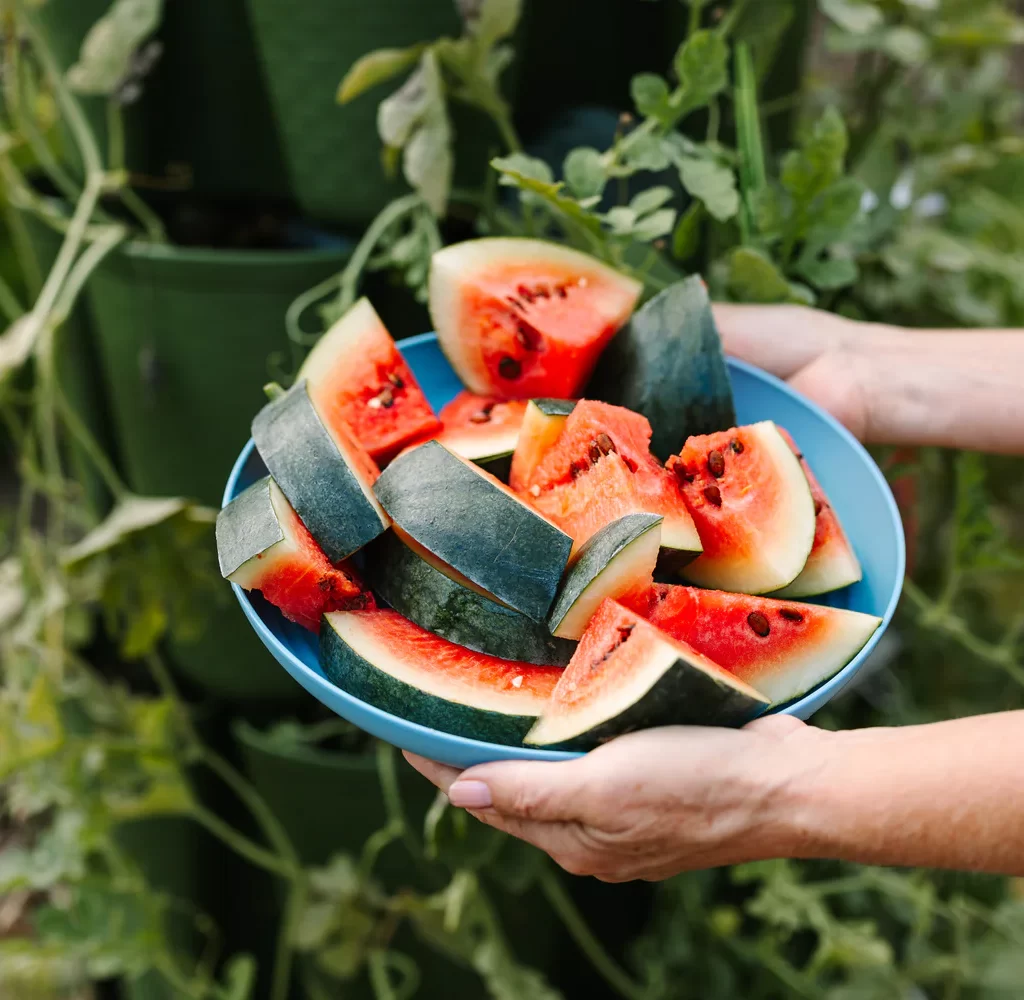
Harvesting Watermelons
Knowing when a watermelon is perfectly ripe can be tricky but look for these signs:
Signs of Ripeness:
- Tendrils nearest the fruit turn brown and dry.
- Underside spot turns from white to creamy yellow.
- Fruit sounds hollow when thumped.
- Skin becomes dull and resists puncture with a fingernail.
Use sharp shears to cut watermelons from the vine, leaving a short stem attached.
Storing and Enjoying Your Watermelon
After harvesting:
- Watermelons can be stored at room temperature for 7–10 days.
- Refrigerate cut fruits and consume within 3–5 days for best flavor.
Watermelons aren’t just for eating fresh. Try them in:
- Smoothies
- Salads with feta and mint
- Grilled slices with a sprinkle of sea salt
- Freshly blended juice
Final Thoughts
Growing watermelons in raised beds is not only doable but incredibly rewarding for home gardeners craving sweet, homegrown fruit. With proper soil preparation, variety selection, trellising, and attentive care, even a small garden space can yield big, juicy harvests.
So whether you dream of picnic-perfect wedges or homegrown watermelons for summer gatherings, now’s the perfect time to plan your raised bed garden. Give watermelons a try — your future self, basking in the sun with a juicy slice in hand, will thank you.

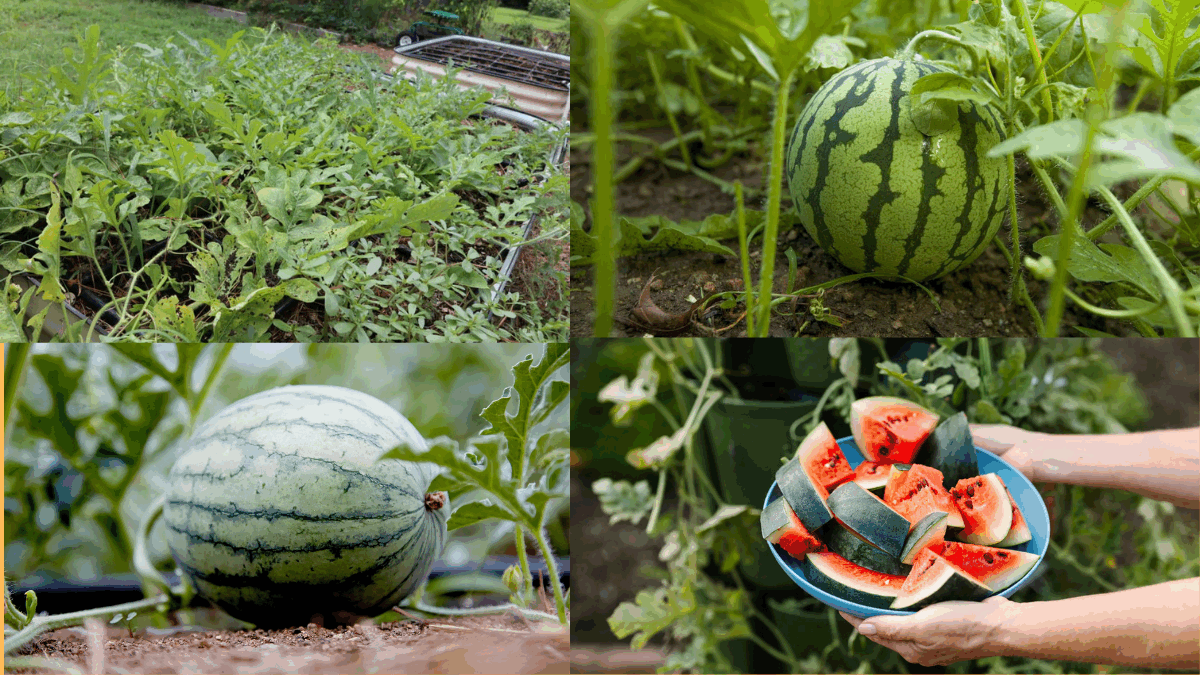




Leave A Comment